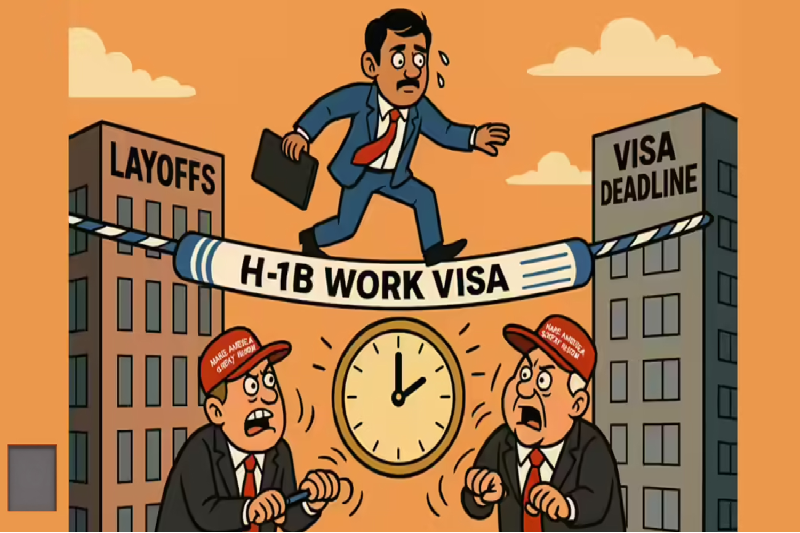
India’s Teacher Deficit: Over 12,000 Vacancies in Kendriya and Navodaya Vidyalayas Raise Concerns
The Ministry of Education has confirmed a troubling trend in India’s central school systems — over 12,000 teaching posts are currently vacant in Kendriya Vidyalayas (KVs) and Navodaya Vidyalayas (NVs) across the country. Jayant Chaudhary, Union Minister of State for Education, formally shared this data in a written response during the Rajya Sabha proceedings on Wednesday, July 24, 2025.
As India's education sector strives to offer inclusive and quality learning experiences, this severe teacher shortage across centrally run schools calls for immediate attention. With more than 7,700 posts vacant in KVs and 4,300 in NVs, the ripple effect on student learning outcomes, classroom dynamics, and overall academic continuity cannot be overlooked.
Teacher Vacancies: The Latest Official Numbers
According to Minister Jayant Chaudhary’s response in the Upper House of Parliament, as of July 2025:
- 7,765 teacher posts are vacant in Kendriya Vidyalaya Sangathan (KVS)
- 4,323 teacher posts are vacant in the Navodaya Vidyalaya Samiti (NVS)
Together, this brings the total number of vacant teaching positions to 12,088, affecting thousands of students across India who depend on these prestigious and government-supported school systems for quality education.
Understanding the Reasons Behind the Vacancies
The minister outlined several contributing factors that have led to the current shortfall in teaching staff. These include:
- The opening of new Kendriya and Navodaya Vidyalayas naturally requires additional staffing.
- Retirements, especially from long-serving educators.
- Resignations due to personal or professional reasons.
- Promotions, which leave lower positions unfilled.
- Transfers to other regions or departments.
- Employees proceeding on lien (temporary deputation or leave to other departments).
- Upgradation of schools, leading to a requirement for new posts at different levels.
This multifaceted list of causes reflects these institutions' expanding scope and the systemic challenge of maintaining staffing levels in dynamic administrative conditions.
Filling the Gaps: A Continuous Recruitment Effort
In response to the issue, the Education Ministry assured us that filling vacancies is a continuous process and that the government is taking “necessary steps” aligned with the relevant recruitment rules.
However, while long-term recruitments remain in process, contractual teachers are being appointed temporarily to maintain classroom functioning and avoid disruptions in students’ academic journeys. This interim measure helps bridge the gap but is not a permanent solution.
Broader Implications on Student Learning and Equity
Kendriya Vidyalayas and Navodaya Vidyalayas are among India's most reputed and trusted central school systems, catering to lakhs of students — often from transferable government employee families and rural or underserved backgrounds, respectively.
- Kendriya Vidyalayas serve children of central government employees, including those in defence and paramilitary services.
- Navodaya Vidyalayas, on the other hand, were established to identify and nurture rural talent through free residential schooling.
Vacancies at this scale can overburden existing teachers, affect teacher-student ratios, limit individual attention, and delay curriculum delivery. Ultimately, this compromises the quality of education, especially for students from communities that heavily rely on these institutions for upward mobility.
Additional Vacancies in Key Educational Bodies
The shortfall isn’t limited to teaching staff in schools. The minister also revealed a significant number of vacancies in major national educational organizations:
- One hundred forty-three academic posts are vacant in the National Council of Educational Research and Training (NCERT). NCERT plays a crucial role in shaping India's school curriculum, teacher training frameworks, and academic standards. Vacancies in such a key institution can delay policy implementation and curriculum updates.
- The National Council for Teacher Education (NCTE) has 60 vacant posts. As the apex body responsible for teacher education and regulation, understaffing in the NCTE can affect teacher training program approvals and monitoring across states.
Both institutions are in the process of filling these gaps, but the current deficit further highlights systemic bottlenecks in India's educational administration.
What’s Being Done — And What Needs Attention
While the Ministry of Education reiterated that recruitment is ongoing and aligned with existing rules, the scale and persistence of these vacancies raise questions about:
- The efficiency of the recruitment process.
- The dependency on temporary contractual teachers.
- The long-term impact on educational outcomes in these elite institutions.
Stakeholders across the education ecosystem — from policy makers to parent bodies and school administrators — will need to collaborate to accelerate appointments and ensure that institutional quality does not suffer due to staffing constraints.
Moreover, robust forecasting models, digitized recruitment pipelines, and faster approvals at the administrative level may help reduce such large-scale gaps in the future.
Conclusion: A Wake-Up Call for Systemic Reforms
With over 12,000 teaching posts lying vacant across Kendriya and Navodaya Vidyalayas and significant staff shortages in NCERT and NCTE, the current situation is not just a statistical concern — it’s a national education challenge. India’s aspiration for quality, inclusive, and equitable education under NEP 2020 hinges on the availability of trained and motivated teachers in every classroom.



